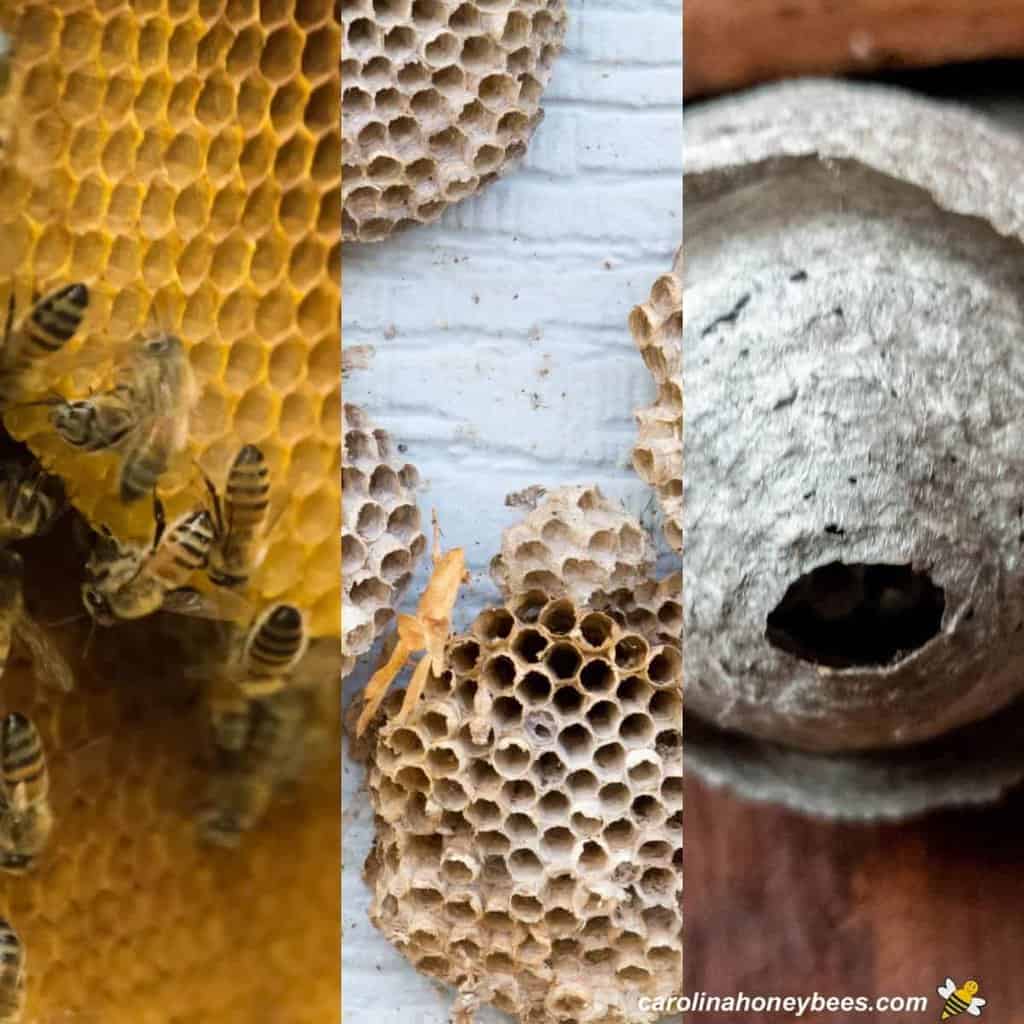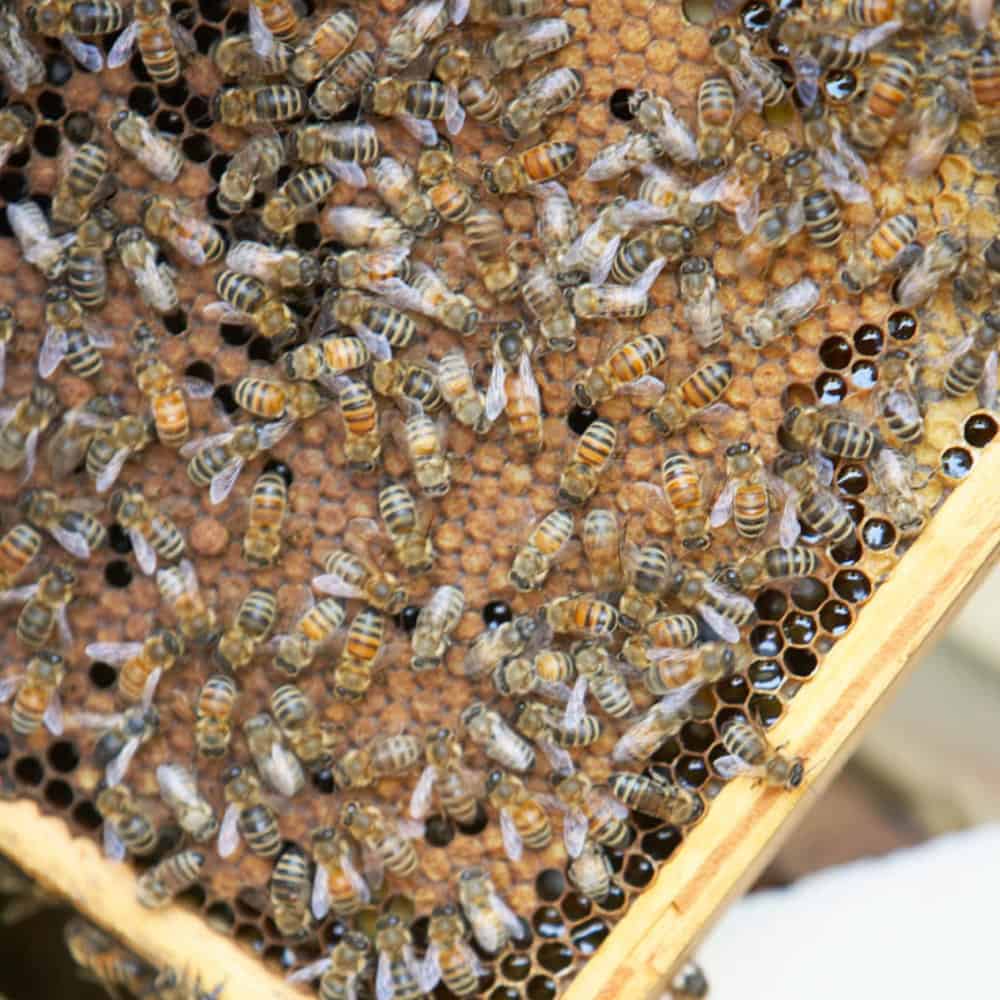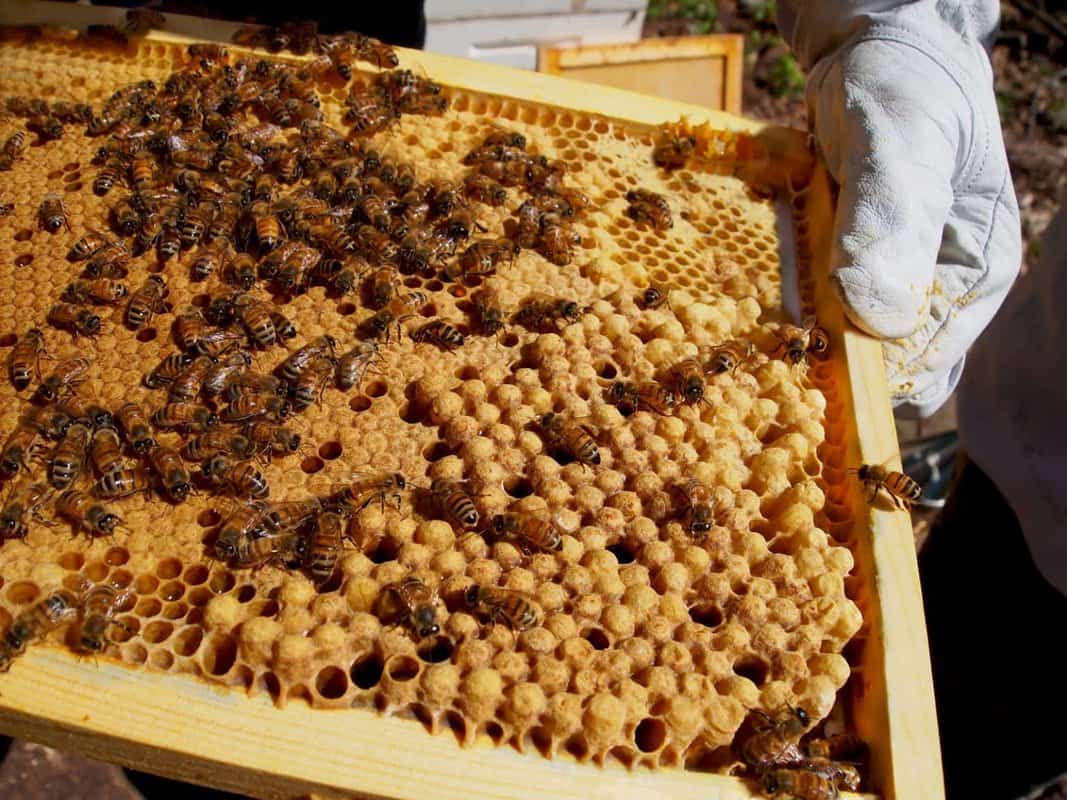Honeybees play an essential role in agriculture and food production. As such, beekeepers must be proactive in identifying, establishing, and protecting honeybee nests in order to ensure their health and success. This article will provide an overview of the steps necessary to identify, establish, and protect a honeybee nest. Through a combination of proper beekeeping techniques and preventative measures, beekeepers can ensure that their honeybee nests are safe and successful.
Honeybee Nest Identification

Characteristics of Honeybee Nests
Honeybee nests are typically round and made of wax, though some may be oval and made of resin. They may be small or large, depending on the size of the colony. The inside of the nest is usually filled with hexagonal cells made of wax, where the honeybees store the honey and lay their eggs.
Where to Look for Honeybee Nests
Honeybee nests can be found in trees, shrubs, walls, and even in the ground. They are often located near a food source, such as flowers, and are often found in sunny, sheltered spots. If you are looking for a honeybee nest, keep an eye out for a large number of honeybees flying in and out of an area. If you find a large cluster of bees near a food source, it is likely a honeybee nest.
Establishing a Honeybee Nest

Building a Hive
The first step to establishing a honeybee nest is to build a hive. A hive is a structure that provides a safe and secure home for the honeybees. It should be constructed of durable materials such as wood, metal, or plastic and should be designed to keep out predators and extreme weather conditions. The hive should also be well ventilated and provide adequate space for the bees to move around and store their honey.
Creating a Friendly Environment for Honeybees
Once the hive is built, it is important to create a friendly environment for the honeybees. This includes providing a source of water and a variety of nectar-rich flowers. The flowers should be native to the area and provide a range of colors and shapes, which will attract the bees. It is also important to provide plenty of shade and a windbreak to protect the bees from extreme temperatures and weather conditions. Additionally, it is important to keep the hive free of pesticides and other chemicals that can harm the bees.
Protecting a Honeybee Nest
Controlling Pests and Predators
To protect a honeybee nest from pests and predators, beekeepers should ensure their beekeeping equipment and hives are clean and in good repair. Beekeepers should also use lures, traps, and other pest control techniques to reduce the number of pests in the area and protect the honeybee nest from potential predators.
Managing Pollen and Nectar Sources
Beekeepers should also ensure their honeybees have access to adequate pollen and nectar sources. This can be done by providing supplemental feed or by planting flowers and other nectar-producing plants in the vicinity of the nest.
Monitoring the Health of the Nest
It is also important to monitor the health of the honeybee nest on a regular basis. Beekeepers should inspect the hives and look for signs of disease or other problems. If any issues are detected, beekeepers should take appropriate action to address the problem and protect the honeybees.
Frequently Asked Questions
What is the Best Way to Locate a Honeybee Nest?
The best way to locate a honeybee nest is to observe their behavior. Honeybees are social insects and typically form colonies in sheltered areas, such as hollow trees or cavities in walls. Look for areas where honeybees are entering and exiting; these are likely to be the entrance to their nest. Additionally, look for clusters of bees around a particular area, as well as bees carrying pollen and nectar back to the nest. These are all indications that a honeybee nest is nearby.
How can I tell if a honeybee nest is healthy?
- Population: A healthy honeybee nest should have a large population of bees. A colony of 10,000 to 20,000 bees is considered healthy.
- Hive Structure: The hive should be well-structured with a neat arrangement of honeycomb. The honeycomb should be white and free from any signs of mould.
- Activity: The bees should be actively working, entering and exiting the hive. There should also be signs of healthy larva in the honeycomb.
- Food Supply: A healthy honeybee nest should be well-stocked with food. The hive should have a good supply of honey and pollen.
- Defence: The bees should be actively defending their hive from predators. If the hive is being attacked by predators, it is a sign that the hive is not healthy.
What type of equipment is needed to begin beekeeping?
Beekeeping requires basic beekeeping equipment such as a bee suit, veil, and smoker, as well as a hive tool, hive boxes, frames, and foundation. It is also important to have a bee brush, bee feeder, and beekeeping gloves. Additionally, a queen excluder and honey extractor are needed for harvesting honey. Finally, it is important to have a beekeeping reference book to assist in identifying and managing the hive.
How often should I inspect the hive?
Regular inspections should be done in order to detect any possible problems with the hive and to ensure the health of the colony. Generally, inspections should be done at least once a week during the summer months, and every two to three weeks during the winter months.
- Check the entrance of the hive for any signs of pests or disease.
- Look for any signs of damage or weakened frames.
- Check for adequate ventilation and air flow in the hive.
- Inspect the hive for any signs of disease or infestation.
- Look for any signs of queen failure or other issues in the hive.
- Check the honey supers to make sure the bees are producing enough honey.
If any problems are detected, the hive should be inspected more frequently and corrective action should be taken.
What Precautions Should I Take to Protect the Honeybee Nest from Predators?
- Keep the hive away from predators – Choose an area that is away from predators like skunks, bears, and raccoons. Make sure to place the hive high off the ground to make it more difficult for predators to access it.
- Secure the hive – Make sure the hive is securely sealed and placed in a secure location. Use screens or other methods to prevent predators from accessing the hive.
- Maintain the hive – Make sure to regularly inspect and maintain the hive to ensure that it is in good condition and not vulnerable to predators.
- Install deterrents – Install deterrents such as motion-activated lights or sound devices to scare away predators.
- Remove food sources – Remove any food sources such as fallen fruit or dead animals that may attract predators.
Conclusion
Beekeeping is a rewarding hobby that requires knowledge, experience, and preparation. By following the steps outlined in this article, you can successfully identify, establish, and protect a honeybee nest. Doing so can help ensure the health and longevity of the hive, and help you to enjoy the delicious rewards of beekeeping.
References
- ABC Diagnostics. (2020, April 1). Beekeeping: How to Identify, Establish, and Protect a Honeybee Nest. Retrieved from https://abcdiagnostics.com/blog/bee-keeping-how-to-identify-establish-and-protect-a-honeybee-nest/
- Root, B. (2019, June 27). All About Bee Nests. Retrieved from https://www.honeybeesuite.com/all-about-bee-nests/
